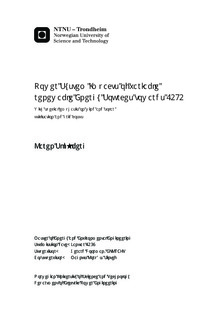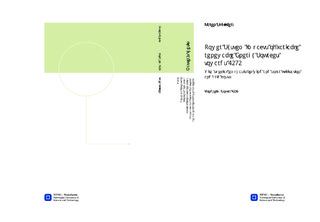| dc.description.abstract | The European Union(EU) has set an ambitious goal of reducing the Green House Gas(GHG) emissions with at least 80-95% in 2050 compared to 1990 levels. Due to the difficulties of avoiding all emissions in other sectors such as transport and agriculture the power sector should be close to 100% renewable. For the European energy system this means that the fossil fuel power has to be strongly reduced and that a vast amount of wind and solar power would have to be installed towards 2050. Due to the long life times of fossil fuel powered plants, 2050 is only one investment cycle away. It is therefore important that the possibilities and challenges of the 2050 energy system are investigated today. A scenario giving the installed capacities in each country for the energy system in 2030 is given in the Scenario Outlook and adequacy forecast(SO&AF) published by the European Network of Transmission System Operators for Electricity(ENTSO-E). The energy system in 2030 is also analysed in the Twenties project by SINTEF Energy Research. In the Energy Roadmap 2050 produced by the European Commission(EC) a scenario with a high share of renewable energy towards 2050 is presented. The main aim of this thesis is to analyse how the further development of wind and solar power after 2030 will influence some key parameters in the power system. One of the focus areas is on how the utilisation of wind and solar power will change when increasing the capacities. Another important issue is how the increased amount of wind and solar influence the thermal production, and how the production mix might change from 2030 to 2050. The flow in High Voltage Direct Current(HVDC) corridors and how the increased amounts of wind and solar towards 2050 influence this flow is another important topic. The last issue that is treated in this thesis is how the costs and bottleneck costs changes as the production mix is changed from 2030 to 2050 levels, especially how the wind and solar influence the congestion costs separately or combined.This study were performed by doing simulations with the Power System Simulation Tool(PSST) model. First a base scenario was simulated, using 2030 data from the SO&AF. Then simulations were done with wind and solar capacities set to 2050 level, separately and combined. This was to reveal the effect the wind and solar power has on the parameters in the power system. In the last scenario, 2050 Whole , the dataset was adapted as best as possible to the 2050 scenario found in the Energy Roadmap 2050.The utilisation of the wind and solar plants decrease when the Renewable Energy Source(RES) capacities are increased to 2050 level compared to the 2030 base scenario. The main explanation to this is that the increased amount of RES gives more grid congestions, which limits the production. The other explanation is that the wind and solar potential actually exceeds the load for some hours. When the wind and solar power is increased to 2050 level the amount of fossil production strongly decrease, due to the higher marginal costs of fossil plants. This causes the share of renewable production to increase from 47% in the 2030 base scenario to 83% in the 2050 whole scenario. The highest concentration of renewable power is on the continent, especially in Germany. The flow on the HVDC cables goes from being mainly export from the Nordic countries and Great Britain to the continental countries in the 2030 base scenario to an increased amount of export from the continent in the 2050 Whole . When the RES capacity is increased to 2050 level the total operating costs in the system goes down, due to the wind and solar power having zero marginal cost. The bottleneck cost become higher as the amount of RES is increased, implying that the grid becomes more congested. However it turns out that increasing the wind capacity alone, gives higher bottleneck cost than increasing both the wind and solar. This is because the solar power has a beneficial diurnal pattern, while the wind power has a beneficial seasonal pattern. This means that the combination of wind and solar power follow the load pattern better than just the wind power and therefore causes less strain on the grid.The fact that the utilisation of wind and solar strongly decrease and that the congestion costs become much higher in the 2050 scenario compared to the 2030 scenario implies that further grid reinforcements might be necessary if such high amounts of renewable power becomes a reality. The high variation in prices and exchange for some areas, that give a high strain on the grid, suggests that new storage possibilities should be investigated for the 2050 energy system. | nb_NO |

